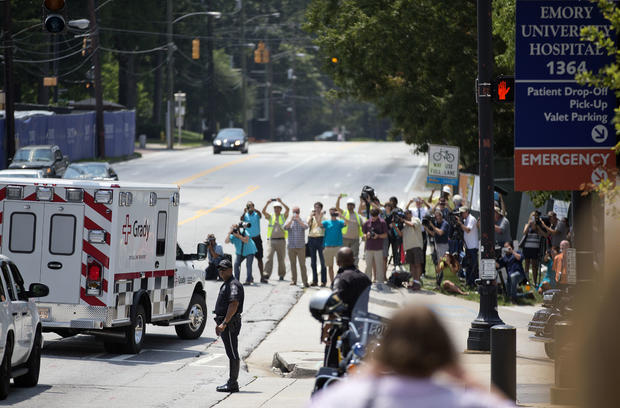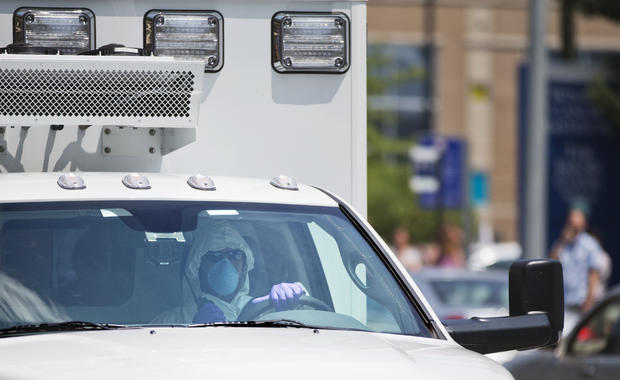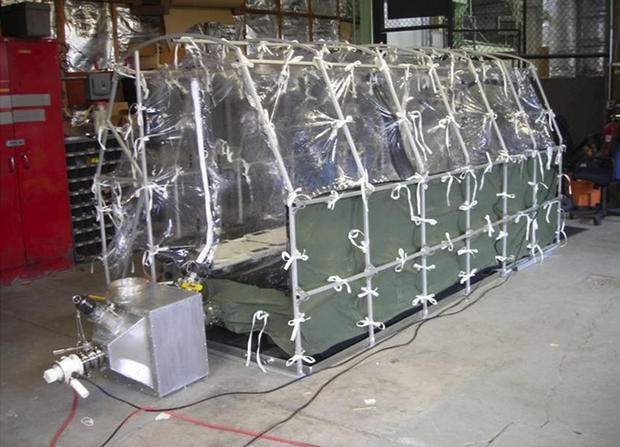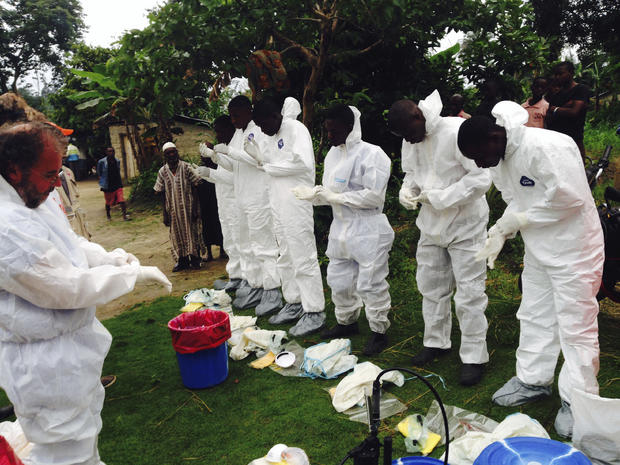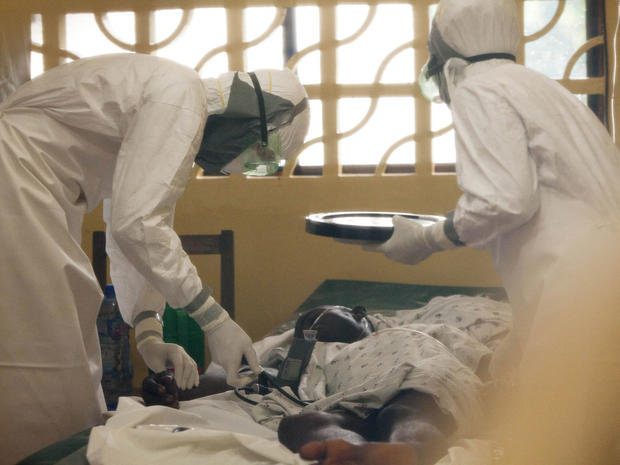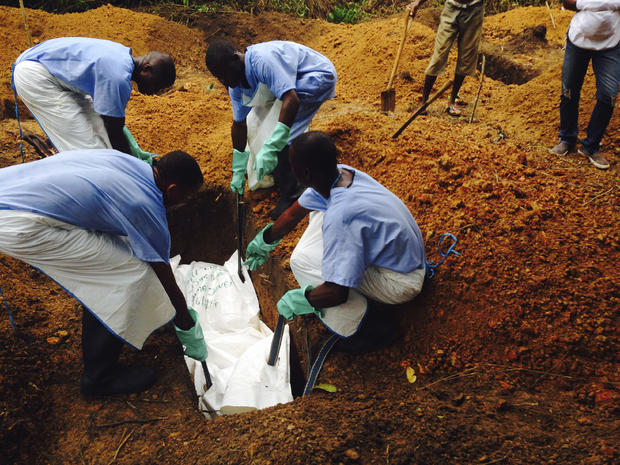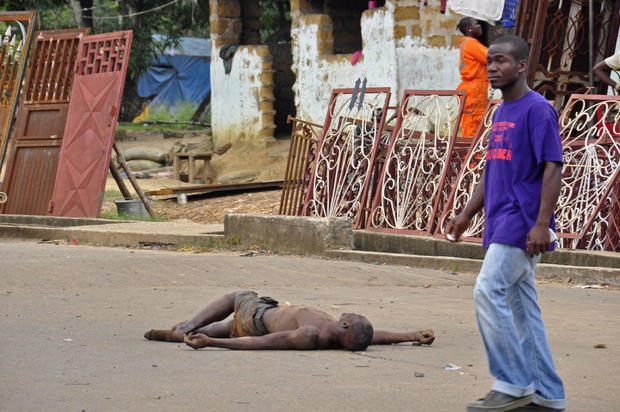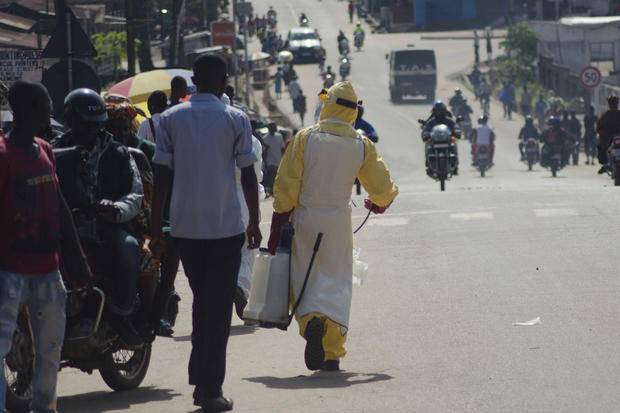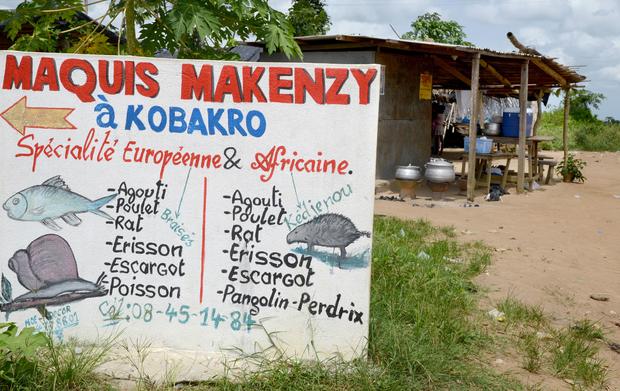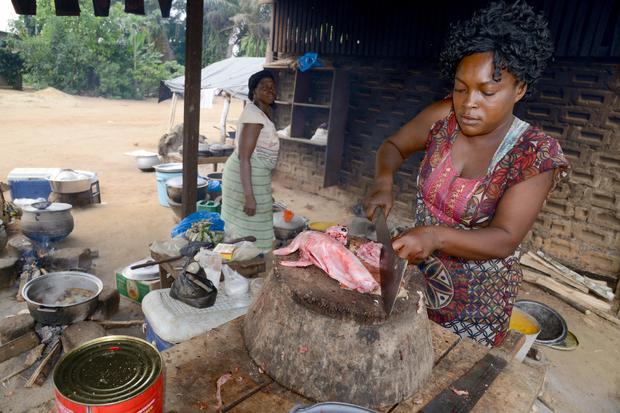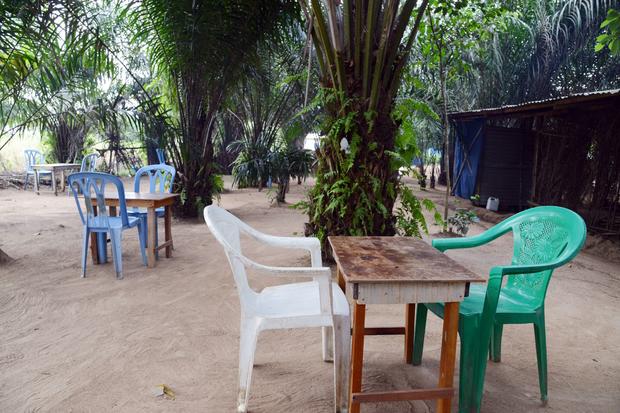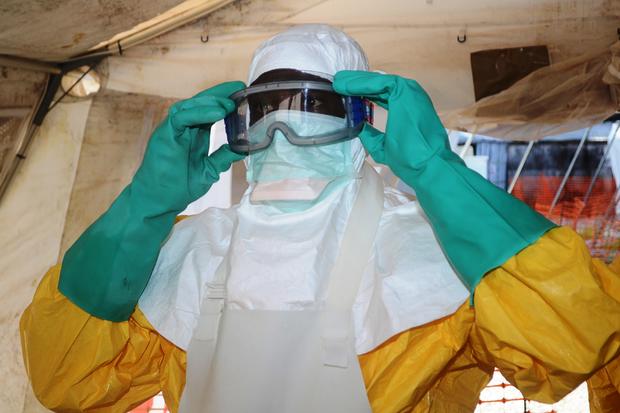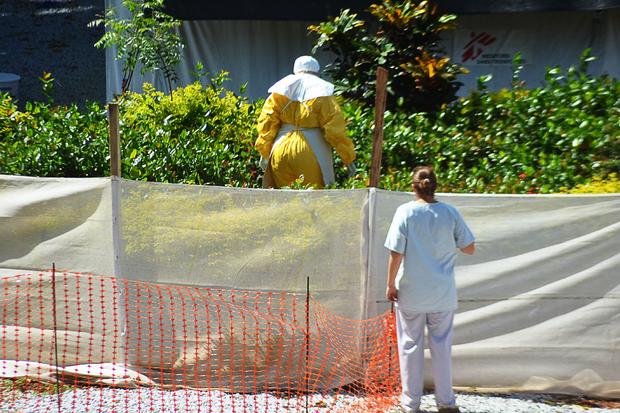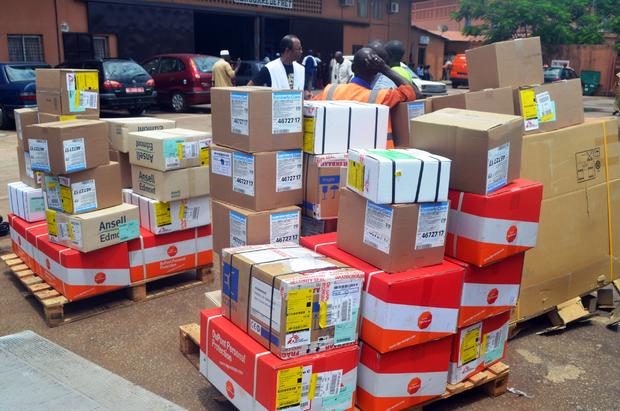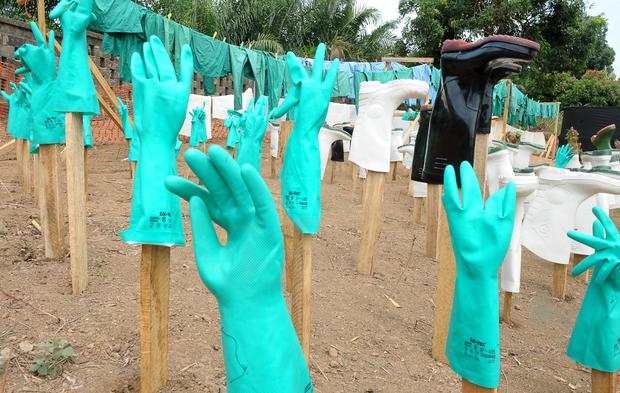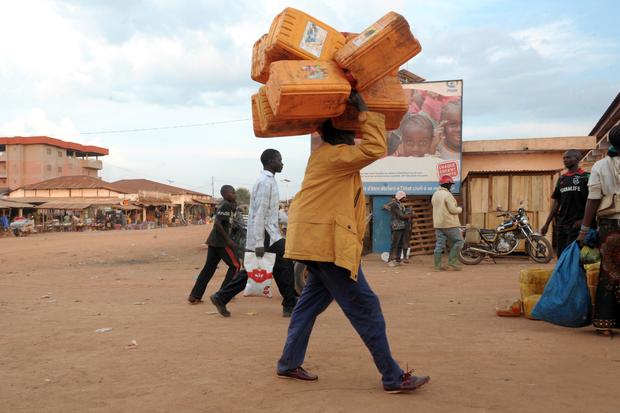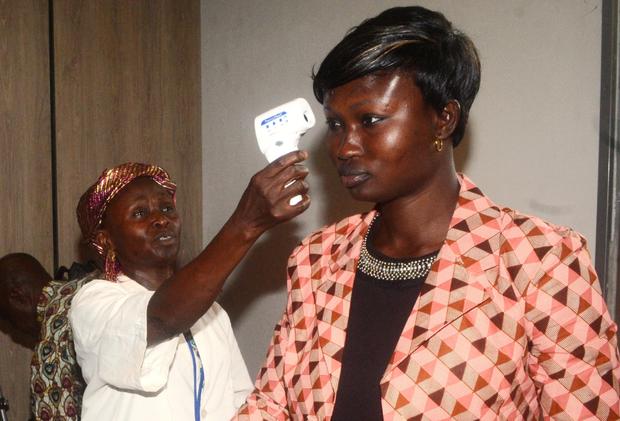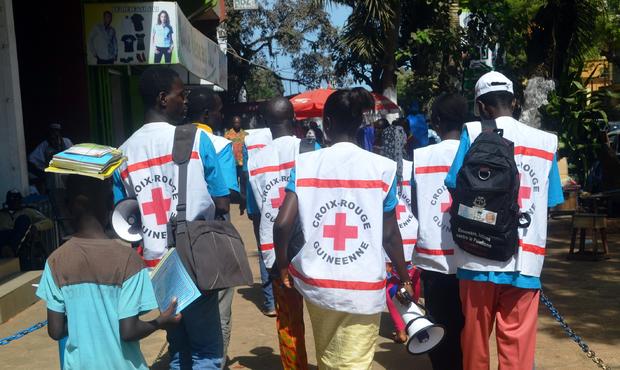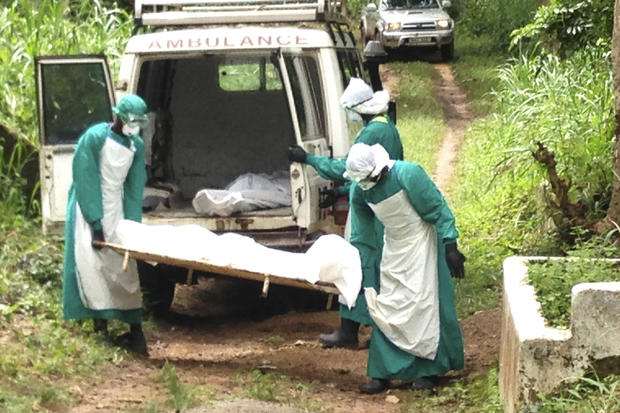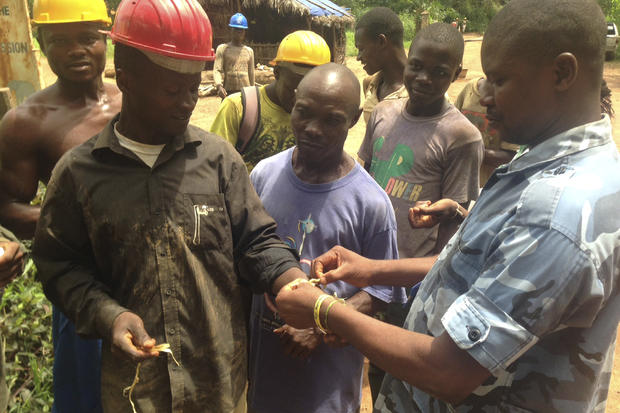Ebola outbreak
An ambulance transporting Nancy Writebol, an American missionary stricken with Ebola, arrives at Emory University Hospital, in Atlanta, Ga., Aug. 5, 2014. Writebol was admitted to Emory University Hospital on Tuesday, where she joins another U.S. aid worker, Dr. Kent Brantly, in a special isolation unit.
Atlanta, Ga.
An ambulance transporting Nancy Writebol, an American missionary stricken with Ebola, arrives at Emory University Hospital, in Atlanta, Ga., Aug. 5, 2014.
American victim arrives in Atlanta
The Aeromedical Biological Containment System (ABCS) is shown in this undated handout photo provided by the Centers for Disease Control (CDC) in Atlanta, Georgia, August 1, 2014. The ABCS is a portable, tent-like device installed in a modified Gulfstream III (G-III) aircraft, providing a means to perform emergency movement of exposed or contagious CDC personnel from the field, or site of exposure, to a facility that can provide appropriate medical care without risk to passengers or air crew, according to the CDC. The ABCS was designed and built by the Department of Defense (DoD), Phoenix Air Group (PAG), and CDC.
The virus
An electron micrograph of the Ebola virus is seen in this image from the Centers for Disease Control and Prevention.
Sierra Leone
Volunteers prepare to remove the bodies of people who were suspected of contracting Ebola and died in the community in the village of Pendebu, north of Kenema, Sierra Leone Aug. 2 , 2014. Hundreds of troops were deployed in Sierra Leone and Liberia on Monday to quarantine communities hit by the deadly Ebola virus.
Brantly and Writebol
Kent Brantly and Nancy Writebol, two American aid workers infected by the Ebola virus and brought to the U.S. for treatment.
Liberia
In this 2014 photo provided by the Samaritan's Purse aid organization, Dr. Kent Brantly, left, treats an Ebola patient at the Samaritan's Purse Ebola Case Management Center in Monrovia, Liberia. On Saturday, July 26, 2014, the North Carolina-based aid organization said Brantly tested positive for the disease and was being treated at a hospital in Monrovia.
Sierra Leone
Volunteers lower a corpse, which is prepared with safe burial practices to ensure it does not pose a health risk to others and stop the chain of person-to-person transmission of Ebola, into a grave in Kailahun, Sierra Leone, Aug. 2, 2014. Hundreds of troops were deployed in Sierra Leone and Liberia on Monday to quarantine communities hit by the deadly Ebola virus.
Liberia
The lifeless body of a man lays unattended in the street as locals suspect him of dying from the deadly Ebola virus, as government warns the public not to leave Ebola victims in the streets in the city of Monrovia, Liberia, Aug. 5, 2014.
Sierra Leone
A health worker with disinfectant spray walks down a street outside the government hospital in Kenema, Sierra Leone, July 10, 2014. Ebola has killed hundreds of people across Guinea, Liberia and Sierra Leone since an outbreak began in March, putting strain on a string of weak health systems facing one of the world's deadliest diseases despite waves of international help.
Sierra Leone
Medical staff working with Medecins sans Frontieres (MSF) prepare to bring food to patients kept in an isolation area at the MSF Ebola treatment centre in Kailahun, Sierra Leone, July 20, 2014. As of July 20, Sierra Leone has the highest number of Ebola cases, surpassing neighbouring Guinea where the outbreak originated as early as January.
Liberia
Empty hospital beds are seen at Redemption Hospital in Monrovia, Liberia after nurses and patients fled the hospital due to Ebola deaths, June 17, 2014.
Ivory Coast
A sign for a "maquis," a small African restaurant, in Kobakro, outside Abidjan, Ivory Coast, advertises their offerings, including bushmeat. The Ministry of Health has asked Ivorians, "particularly fond of porupine and agouti," a small rodent, to avoid consuming or handling the meat, as an unprecedented Ebola epidemic hits West Africa. The virus can spread to animal primates and humans who handle infected meat -- a risk given the informal trade in "bushmeat" in forested central and west Africa.
Ivory Coast
A woman cuts rabbit meat at a "maquis," a small African restaurant, in Kobakro, outside Abidjan, Ivory Coast, which used to serve bush meat, on April 8, 2014.
Ivory Coast
Empty tables wait for customers at a "maquis," a small African restaurant, in Kobakro, Ivory Coast, which now serves various types of meat instead of bushmeat.
Guinea
A member of Doctors Without Borders (MSF) puts on protective gear at the isolation ward of the Donka Hospital in Conakry, Guinea, where people infected with the Ebola virus are being treated, June 28, 2014.
Guinea
A member of Doctors Without Borders (MSF) walks into the isolation ward of the Donka Hospital in Conakry, Guinea, on June 28, 2014.
Guinea
At the Conakry, Guinea, airport member of Doctors Without Borders (MSF), center, supervises the unloading of protection and healthcare material to fight the spread of the Ebola virus and to treat people who have been infected, July 22, 2014.
Ebola first emerged in 1976 in what is now the Democratic Republic of Congo, and is named after a river in that country.
Guinea
Gloves and boots used by medical staff dry in the sun at a center for victims of the Ebola virus in Guekedou, Guinea, April 1, 2014. The viral haemorrhagic fever epidemic raging in Guinea is caused by several viruses which have similar symptoms -- the deadliest and most feared of which is Ebola.
Guinea
A man carries containers in a street of Gueckedou, Guinea, April 1, 2014. Gueckedou, a market city of 220,000 people near the Liberia and Sierra Leone borders, is on the front line of Guinea's increasingly desperate struggle to contain one of the worst outbreaks of Ebola haemorrhagic fever in history.
Guinea
Sanitary control workers at the airport in Conakry, Guinea check passengers before they leave the country, April 10, 2014.
Guinea
Members of the Guinean Red Cross walk during an awareness campaign on the Ebola virus in the capital city, Conakry, April 11, 2014. Guinea has been hit by the most severe strain of the virus, known as Zaire Ebola, which has had a fatality rate of up to 90 percent in past outbreaks, and for which there is no vaccine, cure or even specific treatment. The World Health Organization (WHO) has described West Africa's first outbreak among humans as one of the most challenging since the virus emerged in 1976 in what is now the Democratic Republic of Congo.
Guinea
A man disinfects his shoes as he leaves an isolation center for people infected with Ebola at Donka Hospital in Conakry, Guinea, April 14, 2014.
Sierra Leone
Health workers carry the body of an Ebola virus victim in Kenema, Sierra Leone, June 25, 2014. The Ebola outbreak has killed hundreds of people in Guinea, Liberia and Sierra Leone since the early months of 2014, making it the largest and deadliest ever, according to the World Health Organization (WHO). West African states lack the resources to battle the world's worst outbreak of Ebola and deep cultural suspicions about the disease remain a big obstacle to halting its spread.
Sierra Leone
Government health workers administer blood tests to check for the Ebola virus in Kenema, Sierra Leone, June 25, 2014.
